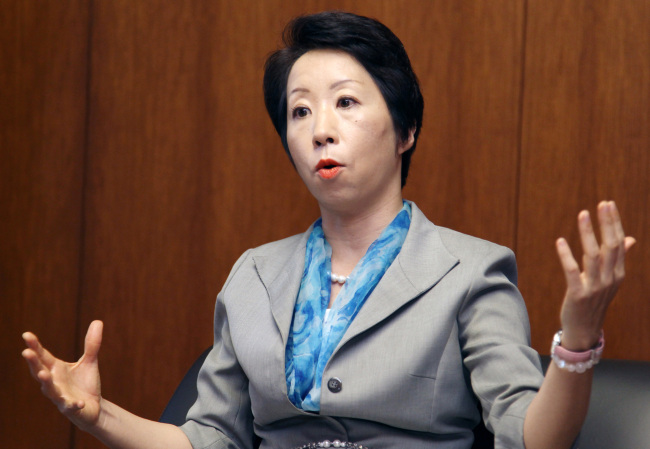Bank of Japan board member Sayuri Shirai suggested the central bank could broaden its 2 percent inflation target into a numerical range once price gains advance closer to the goal.
“The idea of applying a range to the inflation target should not be ruled out,” Shirai said in a speech given in New York and published March 1 on the BOJ’s website. A band “might be examined after the inflation rate exceeds at least 1 percent in a stable manner, and after it is judged that inflation expectations are likely to rise toward 2 percent,” she said.
A target range would match the approach of nations such as Canada and give the Japanese central bank more flexibility as officials assess the risks and benefits of bond purchases. Shirai’s comment implies that the BOJ could tolerate an inflation rate below 2 percent, said Masaaki Kanno, chief Japan economist at JPMorgan Chase & Co.
 |
Sayuri Shirai. (Bloomberg) |
“It’s possible that the BOJ will allow deviation from its goal of achieving 2 percent inflation in two years,” said Tokyo-based Kanno, a former central bank official. “Incorporating a range to the inflation target is in line with recent moves of global central banks. One reason for that is the difficulty of exiting from its current monetary policy.”
Consumer prices excluding fresh food ― the BOJ’s benchmark inflation gauge ― rose 1.3 percent in January from a year earlier, matching December’s gain which was the highest in more than five years. Even so, Shirai warned that it is still too early to implement a band.
“The premature introduction of a range may result in the actual inflation rate getting stuck at the lower bound of the range, making it harder to achieve the 2 percent target,” she said. “The markets and the public may mistakenly assume that the bank’s intention to achieve the target has weakened, undermining the credibility of monetary policy.”
The central bank in January maintained its forecast that core consumer prices, stripped of the impact of planned sales-tax increases, will rise 1.9 percent in the year starting April 2015. Barclays Plc sees it taking until 2017 for the BOJ to reach its goal.
Twenty-five of 34 economists forecast that the BOJ will add to its unprecedented stimulus by the end of September, according to a Bloomberg News survey conducted Feb. 6-12.
Kanno said he expects additional easing by October after the sales tax is increased in April to 8 percent from 5 percent.
“The BOJ would be behind the curve if they were to expand stimulus in October and that would undermine Governor Kuroda’s charisma,” Kanno said. “I think April action would be more preemptive and more effective.” (Bloomberg)








